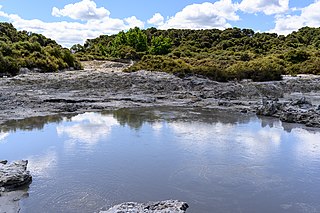Demographics
Fordlands covers 0.99 km2 (0.38 sq mi) [1] and had an estimated population of 2,810 as of June 2023, [2] with a population density of 2,838 people per km2.
Historical population| Year | Pop. | ±% p.a. |
|---|
| 2006 | 2,307 | — |
|---|
| 2013 | 2,118 | −1.21% |
|---|
| 2018 | 2,460 | +3.04% |
|---|
| Source: [6] |
Fordlands had a population of 2,460 at the 2018 New Zealand census, an increase of 342 people (16.1%) since the 2013 census, and an increase of 153 people (6.6%) since the 2006 census. There were 723 households, comprising 1,164 males and 1,296 females, giving a sex ratio of 0.9 males per female. The median age was 28.4 years (compared with 37.4 years nationally), with 711 people (28.9%) aged under 15 years, 570 (23.2%) aged 15 to 29, 969 (39.4%) aged 30 to 64, and 210 (8.5%) aged 65 or older.
Ethnicities were 34.4% European/Pākehā, 67.8% Māori, 14.1% Pacific peoples, 6.2% Asian, and 1.1% other ethnicities. People may identify with more than one ethnicity.
The percentage of people born overseas was 10.6, compared with 27.1% nationally.
Although some people chose not to answer the census's question about religious affiliation, 49.8% had no religion, 35.7% were Christian, 7.7% had Māori religious beliefs, 0.7% were Hindu, 0.2% were Muslim, 0.2% were Buddhist and 0.6% had other religions.
Of those at least 15 years old, 162 (9.3%) people had a bachelor's or higher degree, and 417 (23.8%) people had no formal qualifications. The median income was $19,800, compared with $31,800 nationally. 63 people (3.6%) earned over $70,000 compared to 17.2% nationally. The employment status of those at least 15 was that 726 (41.5%) people were employed full-time, 234 (13.4%) were part-time, and 243 (13.9%) were unemployed. [6]
This page is based on this
Wikipedia article Text is available under the
CC BY-SA 4.0 license; additional terms may apply.
Images, videos and audio are available under their respective licenses.











